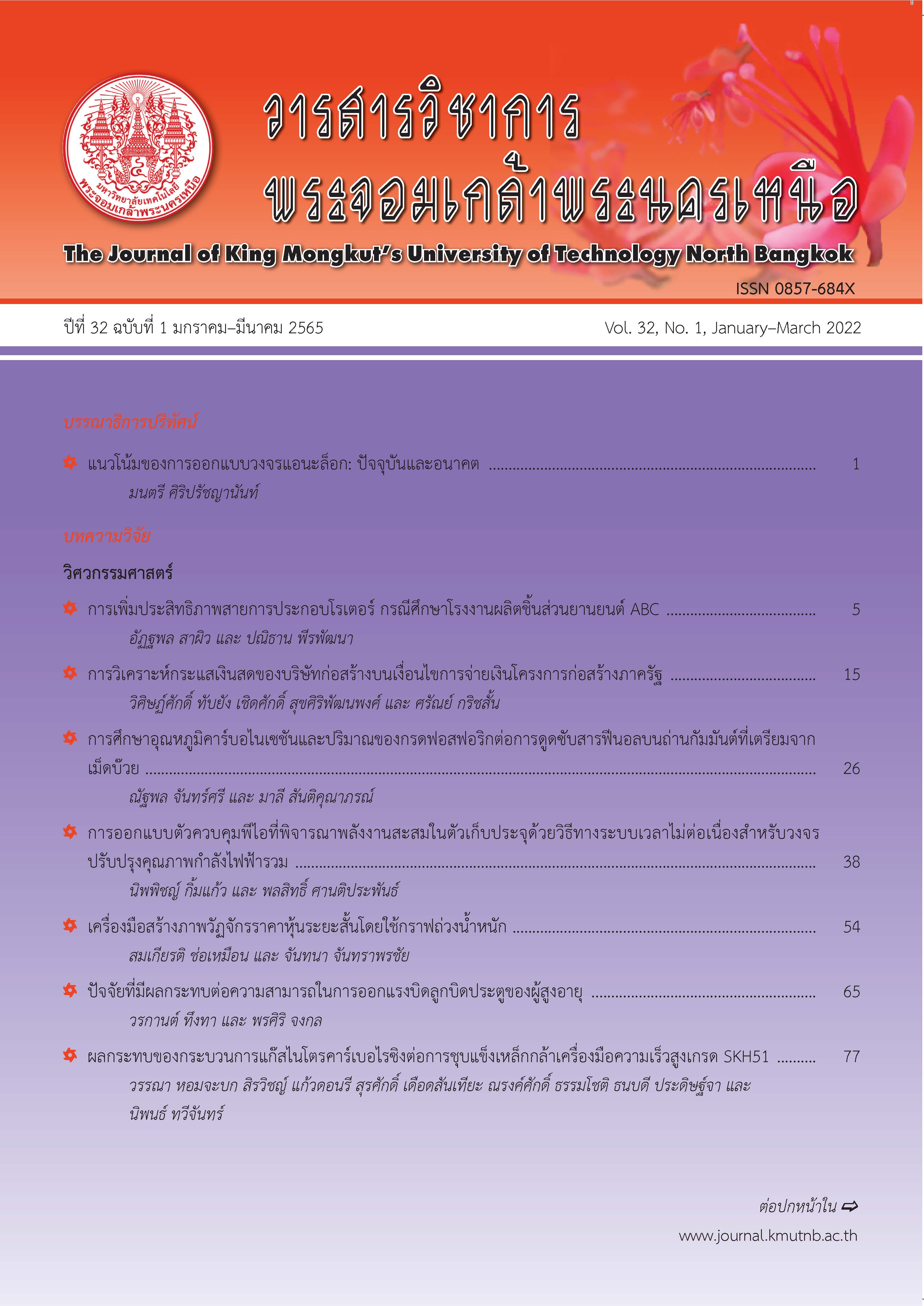ปัจจัยที่มีอิทธิพลต่อการบริหารการตลาดที่ประสบความสำเร็จของวิสาหกิจขนาดกลางและขนาดย่อมในกลุ่มอุตสาหกรรมของประเทศไทย
Main Article Content
บทคัดย่อ
การวิจัยแบบผสมผสานนี้มีวัตถุประสงค์เพื่อ 1) ศึกษาปัจจัยการบริหารการตลาดที่ประสบความสำเร็จของวิสาหกิจขนาดกลางและขนาดย่อมในกลุ่มอุตสาหกรรมของประเทศไทย 2)เพื่อพัฒนาแบบจำลองสมการโครงสร้างของปัจจัยการบริหารหารตลาดที่ประสบความสำเร็จของวิสาหกิจขนาดกลางและขนาดย่อมในกลุ่มอุตสาหกรรมของประเทศไทยตัวอย่างที่ใช้ในการวิจัยเชิงคุณภาพคือ ผู้เชี่ยวชาญ จำนวน 9 ท่าน และผู้ทรงคุณวุฒิ จำนวน 7 ท่าน ตัวอย่างที่ใช้ในการวิจัยเชิงปริมาณคือผู้ประกอบการหรือผู้บริหารงานด้านการตลาดของวิสาหกิจขนาดกลางและขนาดย่อม จำนวน 500 ราย ผลการวิจัยพบว่า 1) ปัจจัยการบริหารการตลาดที่ประสบความสำเร็จของวิสาหกิจขนาดกลางและขนาดย่อมในกลุ่มอุตสาหกรรมของประเทศไทย มีองค์ประกอบทั้งหมด 4 ด้าน ได้แก่ ด้านการตลาด ด้านนวัตกรรม ด้านภาวะผู้นำ และด้านลูกค้าสัมพันธ์ 2) แบบจำลองสมการโครงสร้างมีความสอดคล้องกับข้อมูลเชิงประจักษ์ โดยมีค่า p = 0.188 , 2 /df = 1.087 , GFI =0.960, RMSEA =0.013 ผลการทดสอบสมมุติฐานพบว่า องค์ประกอบด้านภาวะผู้นำ (Leadership) ส่งอิทธิพลทางตรงต่อองค์ประกอบด้านลูกค้าสัมพันธ์ อย่างมีนัยสำคัญทางสถิติที่ระดับ .001 ค่าสัมประสิทธิ์อิทธิพล เท่ากับ 0.84 องค์ประกอบด้านภาวะผู้นำ ส่งอิทธิพลทางตรงต่อองค์ประกอบด้านนวัตกรรม อย่างมีนัยสำคัญทางสถิติที่ระดับ .001 ค่าสัมประสิทธิ์อิทธิพล เท่ากับ 0.62 องค์ประกอบด้านลูกค้าสัมพันธ์ ส่งอิทธิพลทางตรงต่อองค์ประกอบด้านการตลาด อย่างมีนัยสำคัญทางสถิติที่ระดับ .001 ค่าสัมประสิทธิ์อิทธิพล เท่ากับ 0.57 องค์ประกอบด้านนวัตกรรม ส่งอิทธิพลทางตรงต่อองค์ประกอบด้านการตลาด อย่างมีนัยสำคัญทางสถิติที่ระดับ .01 ค่าสัมประสิทธิ์อิทธิพล เท่ากับ 0.46
Article Details
บทความที่ลงตีพิมพ์เป็นข้อคิดเห็นของผู้เขียนเท่านั้น
ผู้เขียนจะต้องเป็นผู้รับผิดชอบต่อผลทางกฎหมายใดๆ ที่อาจเกิดขึ้นจากบทความนั้น
เอกสารอ้างอิง
[2] Department of Industrial Promotion of Small and Medium Enterprises. (2014, September). Small and medium enterprises situation report 2014. The Office of SMEs Promotion. Bangkok, Thailand [Online] (in Thai). Available : https://sme.go.th
[3] C. Gronroos, On DEFINING MArketing : Finding a New Roadmap for Marketing SME, Marketing Theory. Sydney: Cengage, 2016.
[4] C. Donald, The Marketing of Service. London: Butter worth Heinermann, 2016.
[5] J. J. Aaron, C. D. Clay, and H. Eric, “Market orientation, innovativeness and performance of food companies,” Journal of Agribusiness, vol. 27, no. 1–2, pp. 85–106, 2015.
[6] C. L. Wang and P. K. Ahmed, “The development and validation of the organizationl innovativeness construct using confirmatory factor analysis,” European Journal of Innovation Management, vol. 7, no. 4, pp. 303–313, 2014.
[7] W. D. Hoyer and D. J. Maclnnis, “Administrative science quarterly,” Consumer Behavior, vol. 3, no. 16, pp. 321–338, 2014.
[8] R. Schierholz, L. M. Kolbe, and W. Brenner, “Mobilizing customer relationship management: A journey from strategy to system design,” Business Process Management Journal, vol. 13, no. 6, pp. 830–852, 2007.
[9] J. Hagedoorn and M. Cloodt, “Measuring innovative performance: Is there an advantage in using multiple indicators?,” Research Policy, vol. 32, no. 8, pp. 1365–1379, 2013.
[10] H. Mintzberg, “Leadership and management development: An afterword,” The Academy of Management Executive, vol. 18, no. 3, pp. 140–142, 2004.
[11] Suliyanto and Rahab, “The role of market orientation and learning orientation in improving innovativeness and performance of small and medium enterprises,” Asian Social Science, vol. 8, no.1, pp. 134–145, 2012.
[12] C. H. Lovelock and L. Wright, Principles of Service Marketing and Management, New Jersey: Pearson Education, 2012.
[13] J. S. Lee and C. J. Hsieh, “A research in relating entrepreneurship, marketing capability, innovative capability and sustained competitive advantage,” Journal of Business & Economics Research, vol. 8, no. 9, pp. 109–119, 2010.
[14] T. SinlajJaru. Statistical Research and Analysis by SPSS and AMOS, 18th ed., Nonthaburi: SR Printing Mass Products Co., Ltd, 2020 (in Thai).
[15] J. L. Arbuckle, IBM SPSS Amos 20 user’s guide, New York: IBM, 2011.
[16] S. I. Wu and C. L. Lu, “The relationship between CRM, RM, and business Performance: A study of the hotel industry in Taiwan,” International Journal of Hospitality Management, vol. 31, no. 5, pp. 276–285, 2012.

